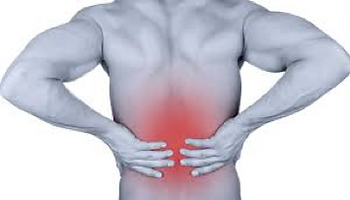Everyone who exercises or who has back pain has been told “You need to strengthen your core!”

I took gross anatomy and have spent the years with the focus of my life working on the human body and know for a fact that there is no core muscle or core group in the body, but we as therapists talk about the core all the time…
…But how many people even have clue what we mean by the core?
People tell me that they’ve been strengthening their core all the time, but when I ask what they’ve been doing they say “Like a hundred Crunches”. So the only way that I can interpret that is that most people think the CORE is just another name for the Abdominal group of muscles (which are actually a group of 4 main muscles that can only all be worked in 3-dimensions, not just by doing crunches).
What is the Core REALLY?
The core is defined as the muscles of your deep corset: Transverse Abdominis (the deepest abdominal muscle that actually traverses around your midsection), the Multifidi (which are deep back muscles lying close to the spine), the diaphragm (the muscle that assists in breathing), and the pelvic floor (the muscles in the bottom of your pelvis that control urine flow).

So by that definition, the CORE is all the muscles that surround your visceral organs (the internal organs in the abdomen) and create a can shape around those organs.
But in fitness and physical therapy, the core is so much more than that. The core includes all the muscles, fascia, and ligaments in everything except your arms and legs that allow your arms and legs to work independently from your “body”. So this includes the deep muscles in your hip that help control your pelvis, your lats, and yes all your abdominals.
Why is the core so Important?
Your core muscles are there to allow your arm and leg muscles to have something stable to pull against. Picture trying to pull your dresser across the room with your feet on a throw rug that just keeps sliding out from under your feet. That is what your arms and legs are going through every time they move that your core does not hold your body still.
Therefore, with a “weak” core you move your arms out in front of you and your whole trunk has to lean back to compensate for the change in weight. So, your back has to move to much just to move your arm.
But there is so much more to it than that.
There are 5 components of Core stability
- Strength—the ability of the muscle to create force
- Endurance—the ability of a muscle or group to sustain a force over time
- Flexibility –the ability of a muscle to move through its full length
- Motor Control—the abilities of muscles to contract at the right time with the right amount of force to create a movement pattern.
- Function—the ability to perform an action appropriately
All five of these components are necessary, but Strength, Endurance and Flexibility are useless without motor control and function. It is all well and good to be capable of lifting hundreds of pounds, but if you cannot control the weight to move it where you want…does it matter. It’s great that you can reach your toes, but if you fall when you try to do it, the flexibility is useless. And if your muscles can contract all day, but have no where to go, what’s the point.
Motor Control and Function are the goal of movement. The goal is to create the right amount of force through the right amount of motion the right amount of times at the exact right time with the right coordination to perform a movement that is useful.

So if you have been using your core for every movement for your entire life, how come it goes bad?
You have been using your core since you were little, but you have also spent time figuring out the most efficient way to move your body around…most people revert to the EASIEST way to throw their body around and not create control. It’s just human nature, we are inherently lazy and will always lean toward the manner of moving that requires the shortest contraction.
This throwing your body around leads to decreased core stability and therefore the beginning of low back pain…and low back pain causes a feedback loop that decreases the abdominals ability to contract (so it becomes a control issue, not a strength issue), which increases your low back pain and the cycle goes on and on…
But there is Hope!
By creating strength, improving flexibility, adding endurance, and improving motor control by using functional patterns and simulating everyday movements through a comprehensive exercise program, stability can improve and pain can be reduced, as well as your ability to move will increase.
I recommend a mixture of strengthening, timing exercises and exercises that include timing while simulating everyday movements.

